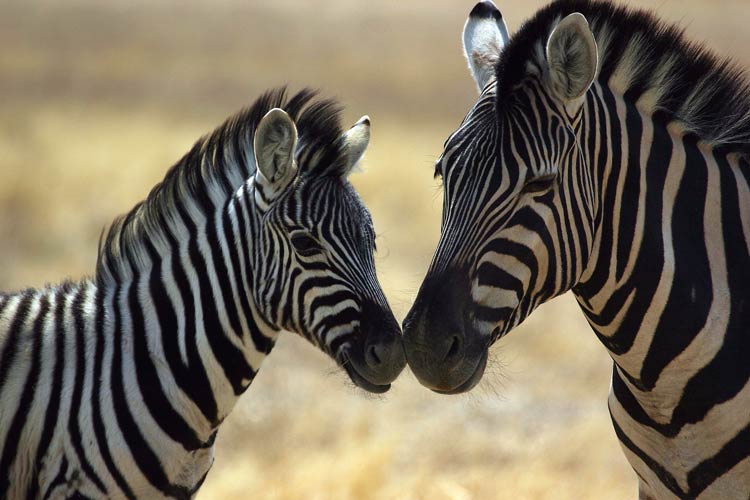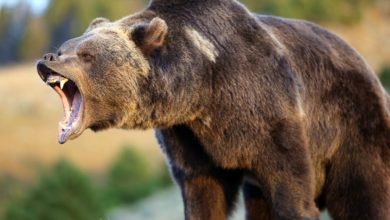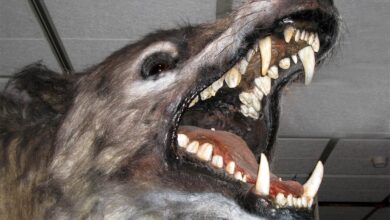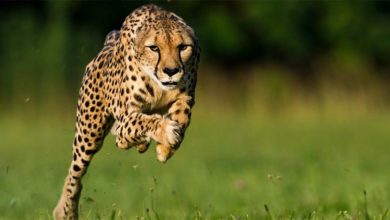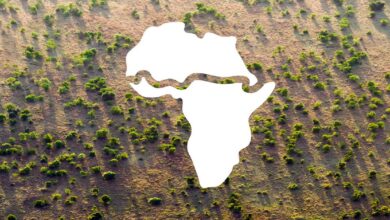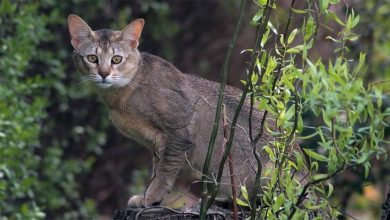Zebra – a horse with stripes?
Zebras are hoofed mammals that are native to Africa. They belong to the family Equidae, which also includes horses and donkeys. There are three species of zebras: the plains zebra / common zebra (Equus quagga), the mountain zebra (Equus zebra), and the Grévy’s zebra / imperial zebra (Equus grevyi). The plains zebra is the most common and widespread species, and it is found throughout much of southern and eastern Africa. The mountain zebra is found in the mountains of southwestern Africa, and the Grévy’s zebra is found in the semi-arid regions of eastern Africa.
Zebras are known for their distinctive black and white striped coat, which is thought to help them blend in with their grassland habitat and confuse predators. The stripes of each individual zebra are unique, much like fingerprints in humans. Zebras also have a mane of long hair that runs down their neck and back.
Zebras are herbivorous animals and feed on grasses, leaves, and other vegetation. They live in herds, which are led by a dominant male. Within the herd, there is a complex social hierarchy, with females and their offspring at the bottom and males at the top. Zebras communicate with each other using a variety of vocalizations, including whinnies, snorts, and brays.
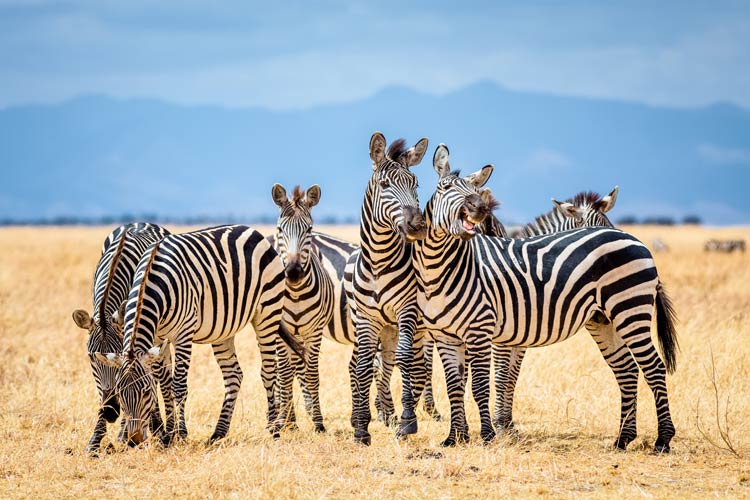
Zebras are relatively large animals, with a typical height of about 125–160 cm (4.10–5.25 ft) at the shoulder and a weight of around 352–450 kg (776–992 lb). They are agile and can run at speeds of up to 40 miles per hour (64 km/h). Zebras are also good swimmers and can cross rivers and other bodies of water to escape predators.
Zebras are important to the ecosystems in which they live, as they help to maintain the balance of grassland vegetation by grazing on grasses and other plants. They are also a key prey species for many large predators, such as lions and hyenas. Zebras have a number of natural predators, including lions, hyenas, crocodiles, and leopards.
In summary, zebras are herbivorous mammals native to Africa that are known for their distinctive black and white striped coat. They live in herds and have a complex social hierarchy, and they are important to the ecosystems in which they live.
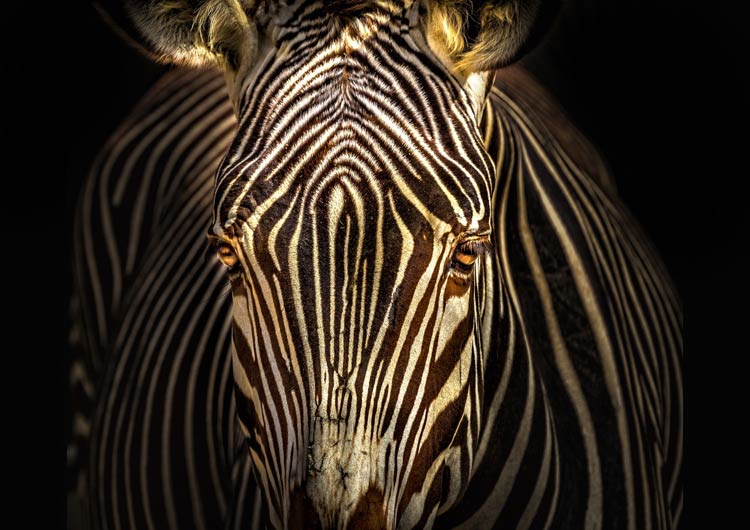
Name Etymology
The word “zebra” comes from the Portuguese word “zevra,” which in turn is thought to be derived from the Latin word “equiferus,” meaning “wild horse.” The name “zebra” was first recorded in English in the early 1600s, and it has been used to refer to all three species of zebras since that time.
The scientific name for the plains zebra is Equus quagga. The word “Equus” is the Latin word for horse, and “quagga” is the Khoikhoi word for zebra. The scientific name for the mountain zebra is Equus zebra, and the scientific name for the Grévy’s zebra is Equus grevyi. All three species are classified within the family Equidae, which also includes horses and donkeys.
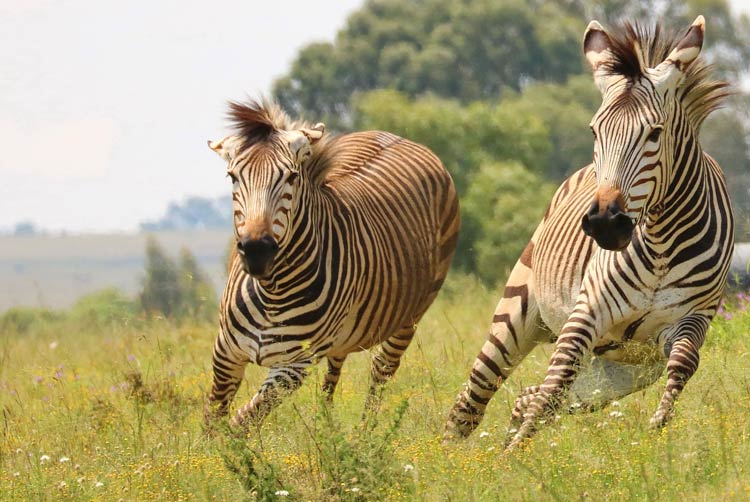
Taxonomy
In taxonomic terms, zebras belong to the following classification:
- Kingdom: Animalia (animals)
- Phylum: Chordata (animals with a backbone)
- Class: Mammalia (mammals)
- Order: Perissodactyla (odd-toed ungulates)
- Family: Equidae (horses, zebras, and donkeys)
- Genus: Equus (horses and zebras)
- Subgenus: Hippotigris
- Species:
- Mountain zebra (Equus zebra)
- Plains zebra / common zebra (Equus quagga / Equus burchellii)
- Grévy’s zebra (Equus grevyi)
Zebras are classified within the genus Equus, which also includes horses and donkeys. Within the genus Equus, there are three species of zebras: the plains zebra (Equus quagga), the mountain zebra (Equus zebra), and the Grévy’s zebra (Equus grevyi). Each species has a unique scientific name that reflects its characteristics and distribution.
Zebras are part of the order Perissodactyla, which includes other odd-toed ungulates such as horses, tapirs, and rhinoceroses. Ungulates are hoofed mammals, and odd-toed ungulates have an odd number of toes on each foot, typically three or four. Zebras and other odd-toed ungulates are adapted for running and are found in a variety of habitats around the world.
Description
Zebras are known for their distinctive black and white striped coat, which is thought to help them blend in with their grassland habitat and confuse predators. The stripes of each individual zebra are unique, much like fingerprints in humans. Zebras also have a mane of long hair that runs down their neck and back.
Zebras are relatively large animals, with a typical height of about 5 feet at the shoulder and a weight of around 500 pounds. They are agile and can run at speeds of up to 40 miles per hour. Zebras are also good swimmers and can cross rivers and other bodies of water to escape predators.
Zebras have a number of physical adaptations that help them survive in their natural habitat. They have strong, agile bodies and powerful legs that allow them to run and escape from predators. They also have good vision and hearing, which helps them detect danger and stay alert. Zebras have large ears that can move independently and are used for communication and to help regulate their body temperature.
Zebras are herbivorous animals and feed on grasses, leaves, and other vegetation. They live in herds, which are led by a dominant male. Within the herd, there is a complex social hierarchy, with females and their offspring at the bottom and males at the top. Zebras communicate with each other using a variety of vocalizations, including whinnies, snorts, and brays.
Zebras are found in a variety of habitats in Africa, including grasslands, savannas, and woodlands. They are well adapted to living in these environments and have a number of behavioral and physiological adaptations that help them survive. Zebras are important to the ecosystems in which they live, as they help to maintain the balance of grassland vegetation by grazing on grasses and other plants. They are also a key prey species for many large predators, such as lions and hyenas.
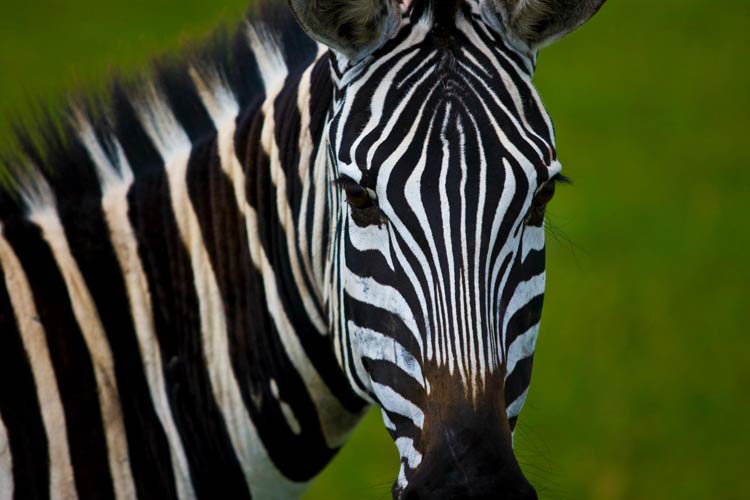
Stripes
Zebras are known for their distinctive black and white striped coat, which is thought to help them blend in with their grassland habitat and confuse predators. The exact function of the stripes is not fully understood, but there are several theories about why zebras have them.
One theory is that the stripes may help zebras blend in with their surroundings, making it more difficult for predators to spot them. This is known as “disruptive coloration.” The stripes may also help zebras confuse predators by making it harder for them to determine the size and shape of the zebra.
Another theory is that the stripes may have a social function, helping zebras recognize and identify other members of their herd. The stripes may also serve as a form of camouflage, helping zebras blend in with the vertical stripes of tall grasses.
The stripes of each individual zebra are unique, much like fingerprints in humans. The patterns of the stripes are determined by genetics and are thought to be influenced by environmental factors, such as temperature and humidity.
Despite the many theories about the function of zebra stripes, it is still not fully understood why zebras have them. Further research is needed to determine the true function of the stripes and how they evolved.
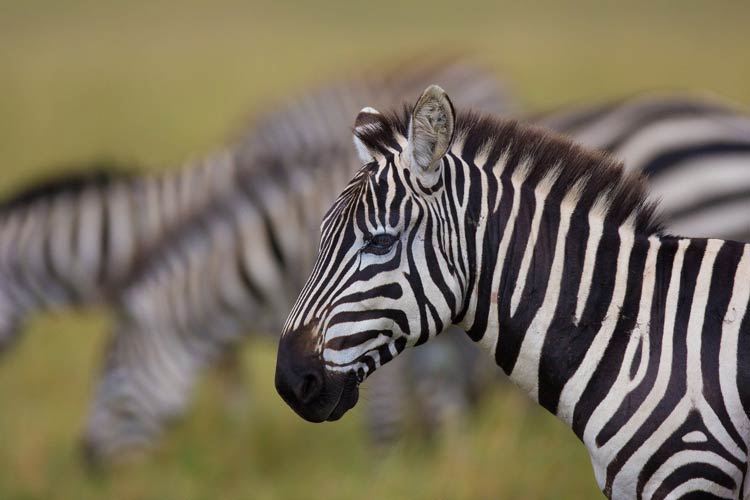
The crypsis hypothesis
The crypsis hypothesis is one of the theories about the function of zebra stripes. Crypsis refers to the ability of an animal to blend in with its surroundings, making it more difficult for predators to spot it. The crypsis hypothesis suggests that the stripes on a zebra’s coat may help the animal blend in with its grassland habitat and confuse predators by breaking up its outline.
The crypsis hypothesis was first proposed by Alfred Wallace in 1896, and it is one of the most widely accepted theories about the function of zebra stripes. However, it is not the only theory, there are other ideas about why zebras have stripes. For example, some researchers have suggested that the stripes may have a social function, helping zebras recognize and identify other members of their herd. Other researchers have proposed that the stripes may serve as a form of camouflage, helping zebras blend in with the vertical stripes of tall grasses.
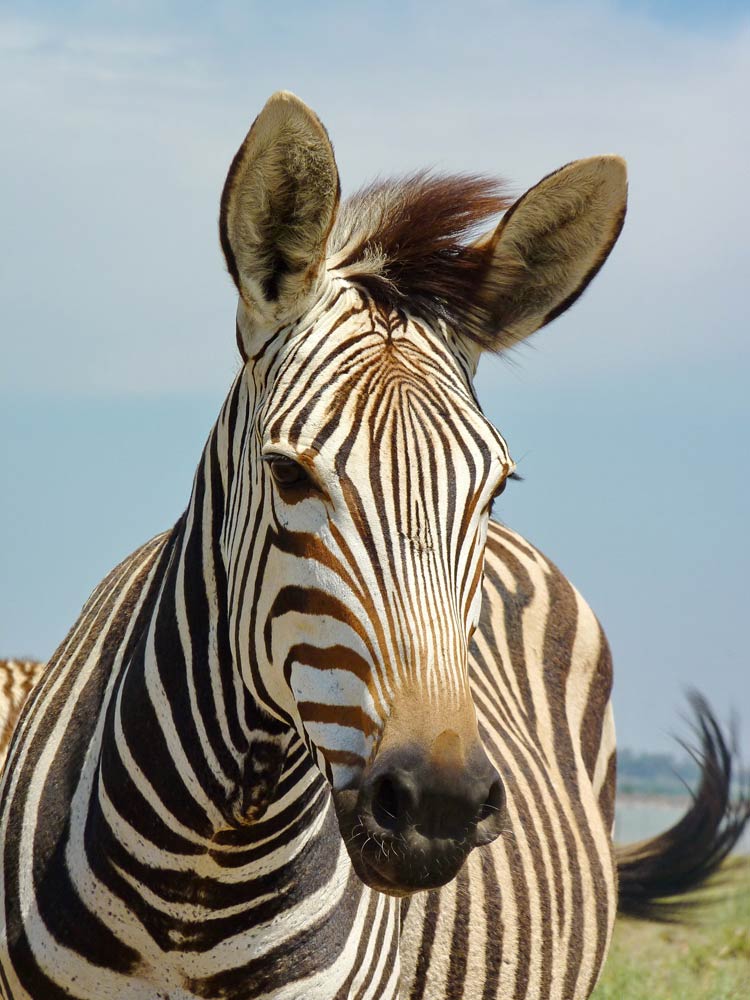
The confusion hypothesis
The confusion hypothesis is another theory about the function of zebra stripes. This theory suggests that the stripes may help zebras confuse predators by making it harder for them to determine the size and shape of the zebra. The stripes may also help to break up the outline of the zebra, making it more difficult for predators to perceive it as a single entity.
The confusion hypothesis is supported by some research that has found that the stripes of a zebra may make it more difficult for predators to accurately estimate the distance to the zebra. For example, a study published in the journal “Nature Communications” in 2016 found that the stripes of a zebra may create an optical illusion that makes the zebra appear to be farther away than it actually is. This could make it more difficult for predators to accurately estimate the distance to the zebra and could help the zebra escape.
However, it is important to note that the confusion hypothesis is just one theory about the function of zebra stripes, and it is not the only explanation for why zebras have them. There are other ideas about the function of the stripes, and it is possible that zebras have stripes for multiple reasons. Further research is needed to determine the true function of the stripes and how they evolved.
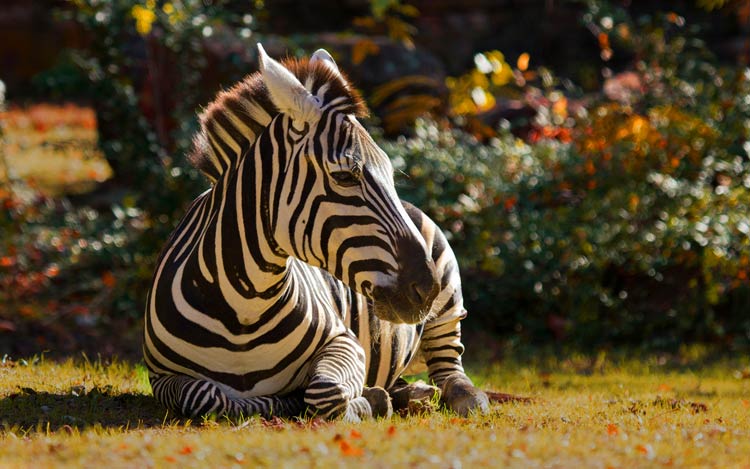
The aposematic hypothesis
The aposematic hypothesis is another theory about the function of zebra stripes. Aposematism refers to the use of bright or contrasting colors by animals to warn predators that they are toxic or otherwise dangerous. The aposematic hypothesis suggests that the stripes on a zebra’s coat may serve as a form of warning coloration, indicating to predators that the zebra is not easy prey.
The aposematic hypothesis is supported by some research that has found that the stripes of a zebra may make it more difficult for predators to accurately estimate the distance to the zebra. For example, a study published in the journal “Nature Communications” in 2016 found that the stripes of a zebra may create an optical illusion that makes the zebra appear to be farther away than it actually is. This could make it more difficult for predators to accurately estimate the distance to the zebra and could help the zebra escape.
However, it is important to note that the aposematic hypothesis is just one theory about the function of zebra stripes, and it is not the only explanation for why zebras have them. There are other ideas about the function of the stripes, and it is possible that zebras have stripes for multiple reasons. Further research is needed to determine the true function of the stripes and how they evolved.
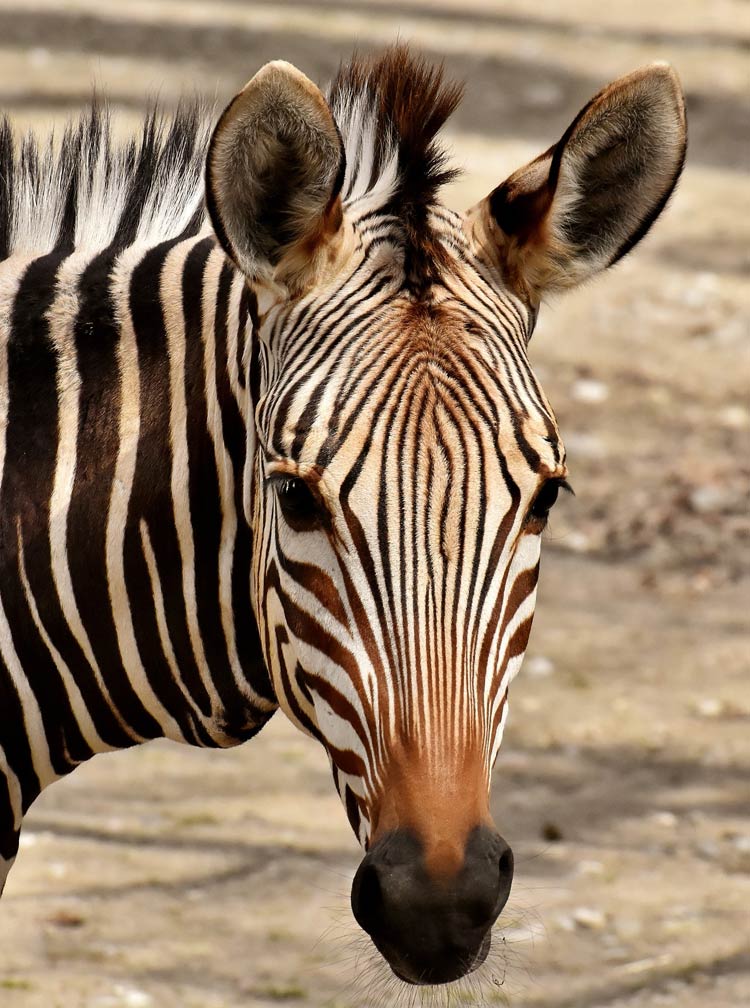
The social function hypothesis
The social function hypothesis is another theory about the function of zebra stripes. This theory suggests that the stripes may serve as a form of identification, helping zebras recognize and distinguish other members of their herd. The stripes may also have a social function, helping zebras communicate and coordinate with each other.
There is some evidence to support the social function hypothesis. For example, research has found that zebras use vocalizations and other forms of nonverbal communication to communicate with each other. Zebras also have a complex social hierarchy, with females and their offspring at the bottom and males at the top. The stripes may play a role in this social hierarchy, helping zebras recognize and identify each other within the herd.
However, it is important to note that the social function hypothesis is just one theory about the function of zebra stripes, and it is not the only explanation for why zebras have them. There are other ideas about the function of the stripes, and it is possible that zebras have stripes for multiple reasons. Further research is needed to determine the true function of the stripes and how they evolved.
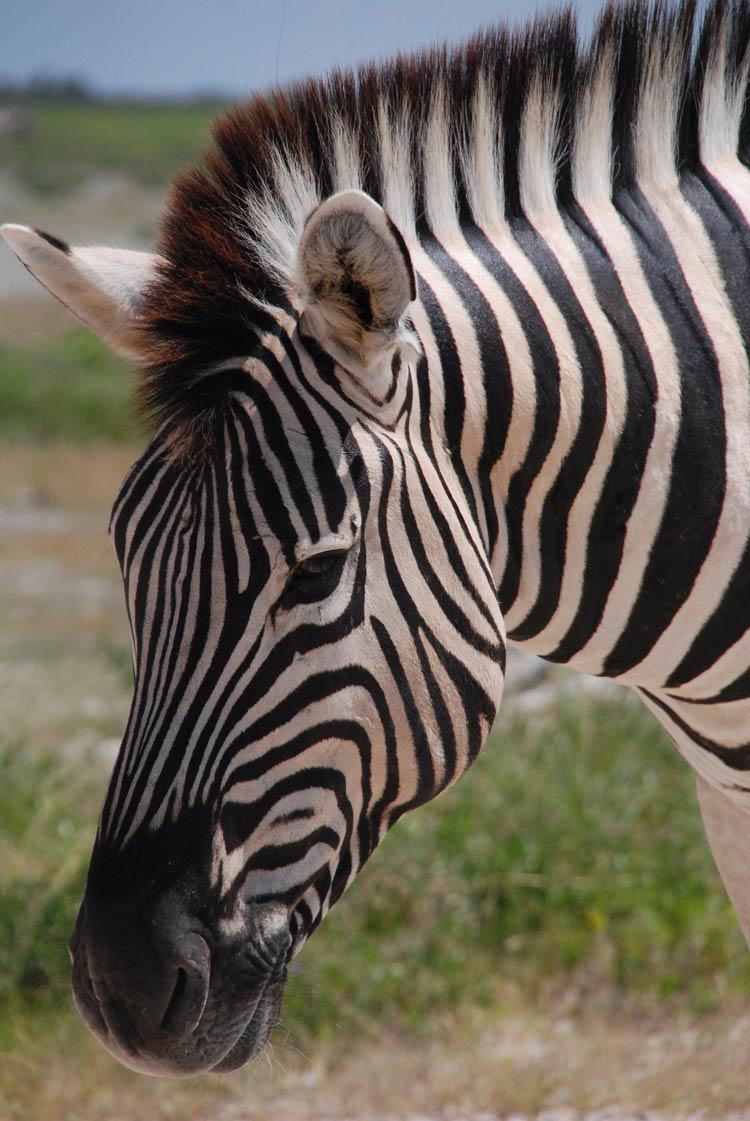
The thermoregulatory hypothesis
The thermoregulatory hypothesis is another theory about the function of zebra stripes. This theory suggests that the stripes may help zebras regulate their body temperature by dissipating heat.
Zebras live in hot, arid environments and must cope with high temperatures and limited water resources. The stripes on a zebra’s coat may help the animal stay cool by dissipating heat. The black stripes absorb more heat than the white stripes, and the alternating pattern of the stripes may create a cooling effect as the heat is dissipated.
There is some evidence to support the thermoregulatory hypothesis. For example, research has found that the body temperature of zebras is lower than that of horses, which do not have stripes. Zebras also have large ears that can move independently and are used for communication and to help regulate their body temperature.
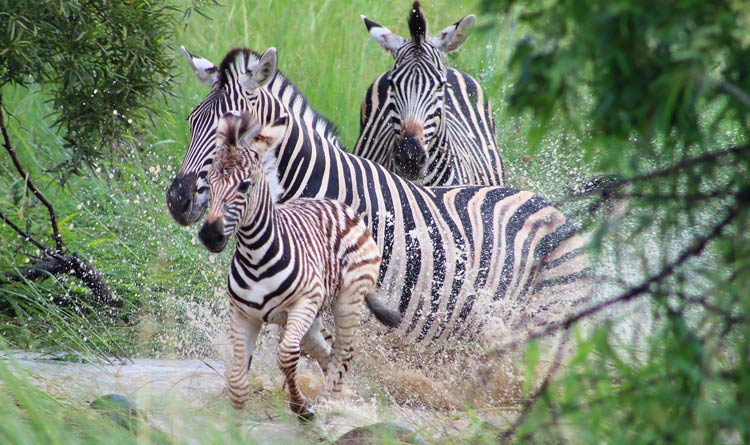
The fly protection hypothesis
The fly protection hypothesis is another theory about the function of zebra stripes. This theory suggests that the stripes may help zebras protect themselves from biting flies, such as horseflies and tsetse flies.
Zebras live in environments that are home to many different species of biting flies, which can be a nuisance and can transmit diseases. The stripes on a zebra’s coat may help the animal deter flies by making it more difficult for them to land on the zebra’s skin. The stripes may also create a confusing visual pattern that makes it harder for flies to locate and bite the zebra.
There is some evidence to support the fly protection hypothesis. For example, research has found that zebras have fewer bites and sores on their skin than horses, which do not have stripes. Zebras also have long manes and tails, which may help to further deter flies.
However, it is important to note that the fly protection hypothesis is just one theory about the function of zebra stripes, and it is not the only explanation for why zebras have them. There are other ideas about the function of the stripes, and it is possible that zebras have stripes for multiple reasons. Further research is needed to determine the true function of the stripes and how they evolved.
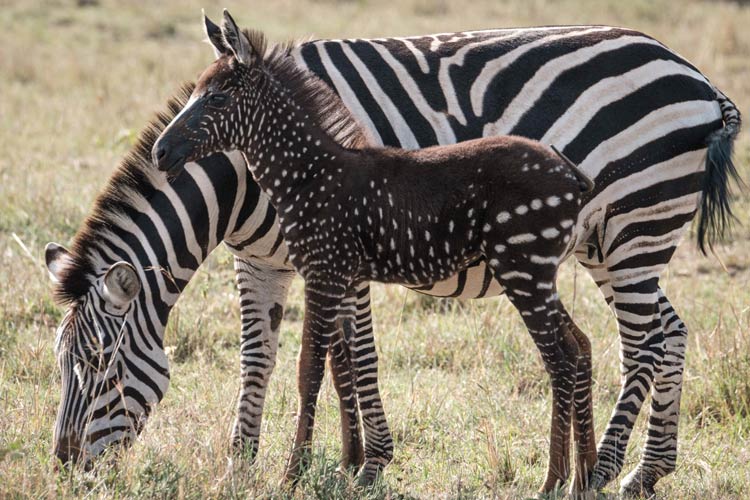
Ecology and behavior
Zebras are found in a variety of habitats in Africa, including grasslands, savannas, and woodlands. They are well adapted to living in these environments and have a number of behavioral and physiological adaptations that help them survive.
Zebras are herbivorous animals and feed on grasses, leaves, and other vegetation. They live in herds, which are led by a dominant male. Within the herd, there is a complex social hierarchy, with females and their offspring at the bottom and males at the top. Zebras communicate with each other using a variety of vocalizations, including whinnies, snorts, and brays.
Zebras are important to the ecosystems in which they live, as they help to maintain the balance of grassland vegetation by grazing on grasses and other plants. They are also a key prey species for many large predators, such as lions and hyenas. Zebras have a number of natural predators, including lions, hyenas, crocodiles, and leopards.
Zebras are relatively large animals, with a typical height of about 5 feet at the shoulder and a weight of around 500 pounds. They are agile and can run at speeds of up to 40 miles per hour. Zebras are also good swimmers and can cross rivers and other bodies of water to escape predators.
Zebras are social animals and are often found in herds, which can range in size from a few individuals to several hundred. Within the herd, there is a complex social hierarchy, with females and their offspring at the bottom and males at the top. Zebras use a variety of vocalizations, body language, and other forms of communication to interact with each other.
Zebras are important to the ecosystems in which they live, as they help to maintain the balance of grassland vegetation by grazing on grasses and other plants. They are also a key prey species for many large predators, such as lions and hyenas. Zebras have a number of natural predators, including lions, hyenas, crocodiles, and leopards.
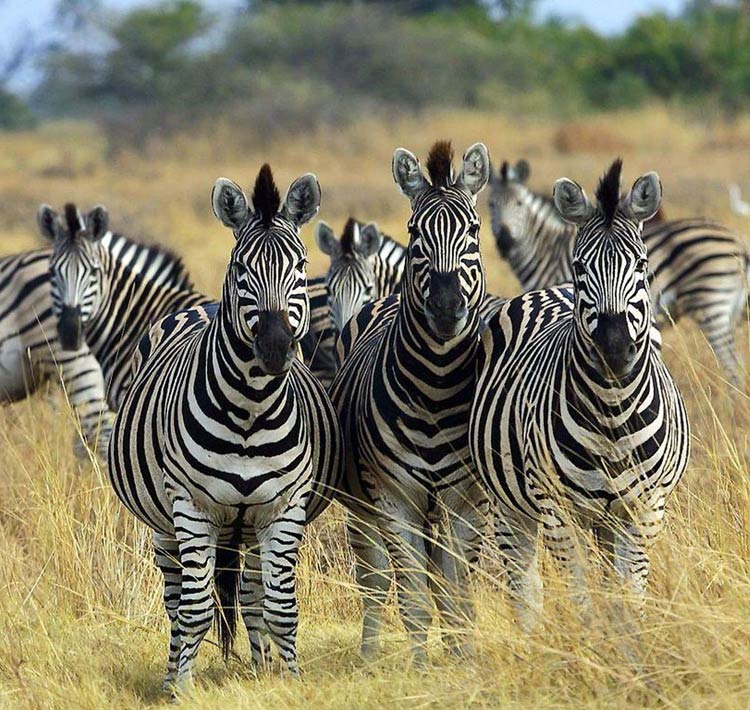
Characteristics
Zebras are relatively large animals, with a typical height of about 1.5 meters (5 feet) at the shoulder and a weight of around 227 kilograms (500 pounds). Their bodies are agile and strong, and they have powerful legs that allow them to run at speeds of up to 64 kilometers per hour (40 miles per hour).
Zebras have large ears that can move independently and are used for communication and to help regulate their body temperature. The ears of a zebra can be up to 30 centimeters (12 inches) long. Zebras also have a mane of long hair that runs down their neck and back. The length of the mane can vary depending on the species of zebra and the individual animal.
Zebras are known for their distinctive black and white striped coat, which is made up of short, stiff hairs. The stripes of each individual zebra are unique, much like fingerprints in humans. The patterns of the stripes are determined by genetics and are thought to be influenced by environmental factors, such as temperature and humidity. The stripes are generally parallel and run vertically down the body, with some variations depending on the species of zebra.
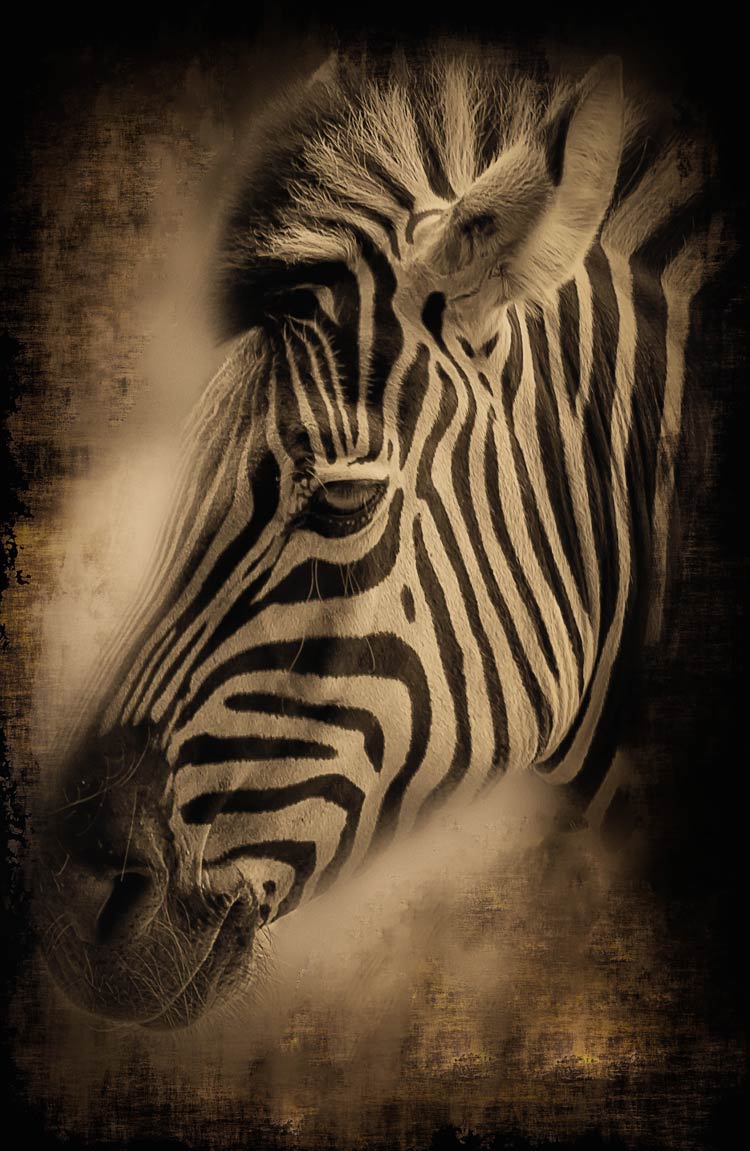
Social structure
Zebras are social animals and are often found in herds, which can range in size from a few individuals to several hundred. Within the herd, there is a complex social hierarchy, with females and their offspring at the bottom and males at the top. The social structure of zebras can vary depending on the species and the specific habitat in which they live.
In general, zebras live in herds that are led by a dominant male. The dominant male is responsible for protecting the herd and leading the group to new sources of food and water. Female zebras and their offspring make up the majority of the herd and are typically organized into smaller subgroups based on relationships and kinship.
Zebras communicate with each other using a variety of vocalizations, body language, and other forms of communication. They use vocalizations, such as whinnies, snorts, and brays, to communicate with each other and to communicate with members of other herds. Zebras also use body language, such as head tossing and ear flicking, to convey different messages and emotions.
Zebras are intelligent and social animals, and they are able to form strong bonds with other members of their herd. They are known to groom each other and engage in play behavior, such as chasing and kicking. Zebras also rely on each other for protection and support, and they are known to work together to defend the herd against predators.
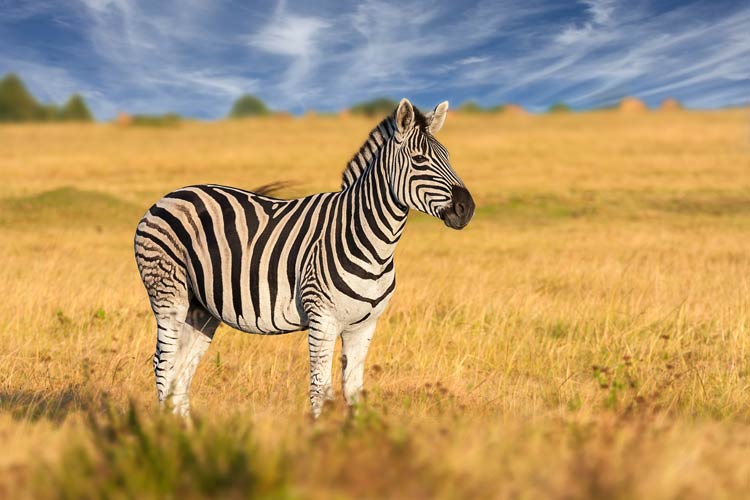
Communication
Zebras communicate with each other using a variety of vocalizations, body language, and other forms of communication. They use vocalizations, such as whinnies, snorts, and brays, to communicate with each other and to communicate with members of other herds. Zebras also use body language, such as head tossing and ear flicking, to convey different messages and emotions.
Zebras are social animals and rely on communication to maintain the cohesion of their herds and to establish and maintain social relationships. They use vocalizations and body language to communicate a variety of messages, including warnings about predators, invitations to play, and expressions of aggression or submission.
Zebras also use their large ears to communicate. The ears of a zebra can move independently and are used for communication and to help regulate the animal’s body temperature. Zebras can use their ears to convey different messages, such as aggression or submission, and to communicate with other members of the herd.
Zebras are intelligent and social animals, and they are able to form strong bonds with other members of their herd. They are known to groom each other and engage in play behavior, such as chasing and kicking. Zebras also rely on each other for protection and support, and they are known to work together to defend the herd against predators.
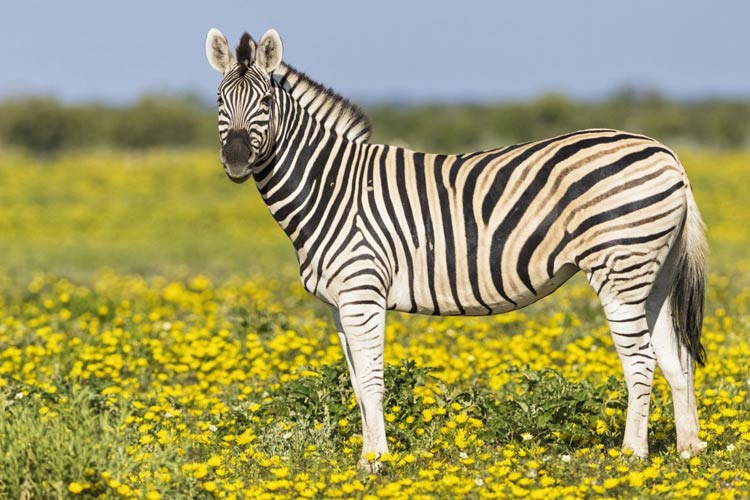
Reproduction and parenting
Zebras are social animals and reproduce in a variety of ways depending on the species and the specific habitat in which they live. In general, female zebras reach sexual maturity at around 2 to 3 years of age, and males at around 3 to 4 years of age.
Zebras are polygynous, which means that males mate with multiple females. The dominant male of a herd is typically the most successful at reproducing, as he has the highest access to females. However, other males may also mate with females, either by forming temporary alliances with the dominant male or by sneaking in to mate with females when the dominant male is not present.
After mating, female zebras have a gestational period of around 12 to 13 months, depending on the species. During this time, the female carries the developing offspring in her uterus and provides it with nourishment through the placenta.
When the offspring is born, it is called a foal. Foals are typically born in the spring or summer, when conditions are most favorable for their survival. Female zebras are usually the primary caregivers for their offspring and are responsible for feeding, protecting, and nurturing them. Zebras have a strong maternal bond and are known to be fiercely protective of their offspring.
Zebras are social animals and often live in herds, which can provide additional support and protection for offspring. Zebras are also known to form strong bonds with other members of their herd and may rely on them for help in caring for their offspring.
Zebras typically have one offspring at a time, although it is not uncommon for them to have twins. Foals are born fully developed and are able to walk and follow their mother within a few hours of being born. They are weaned at around 6 to 12 months of age, depending on the species, and become fully independent at around 2 to 3 years of age.
Zebras have a relatively long lifespan, with an average lifespan of around 25 years in the wild and up to 30 years in captivity. However, they face many challenges in their natural habitat, including predation, disease, and habitat loss, and many do not reach their full lifespan.
Zebras are important to the ecosystems in which they live, as they help to maintain the balance of grassland vegetation by grazing on grasses and other plants. They are also a key prey species for many large predators, such as lions and hyenas, and play an important role in the food web.
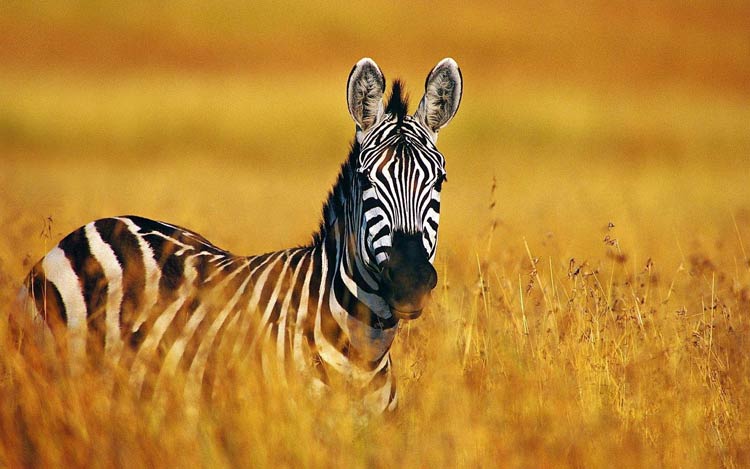
Cultural significance
Zebras are iconic animals that are found in many different cultures around the world. They have been depicted in art, literature, and other forms of media for centuries and have inspired a range of cultural expressions and traditions.
Zebras are often associated with Africa and are a popular symbol of the continent’s wildlife and natural beauty. They are also popular in zoos and wildlife parks around the world, where they are often featured as attractions for visitors.
Zebras have also been used in various cultural and religious traditions. In some African cultures, zebras are seen as sacred animals and are believed to have special powers or to be connected to the spirit world. Zebras have also been used as symbols of good luck and prosperity in various cultures.
Zebras are also popular in popular culture and have been featured in a range of movies, TV shows, and other media. They are often depicted as playful, intelligent, and social animals and are beloved by many people around the world.
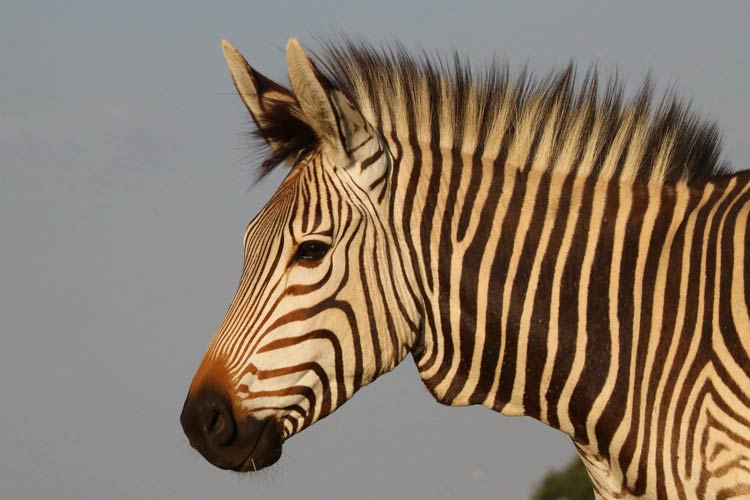
Captivity
Zebras are found in a variety of habitats in Africa, including grasslands, savannas, and woodlands. They are well adapted to living in these environments and have a number of behavioral and physiological adaptations that help them survive.
Zebras can be found in zoos and wildlife parks around the world, where they are kept in captivity and cared for by trained professionals. Zebras in captivity are typically provided with a spacious and naturalistic enclosure that is designed to mimic their natural habitat as closely as possible. They are also provided with a varied and nutritionally balanced diet, as well as regular medical care and social interaction with other zebras.
Zebras are intelligent and social animals and require a high level of care and attention in order to thrive in captivity. They are known to form strong bonds with other members of their herd and require social interaction and stimulation to remain healthy and happy. Zebras in captivity are also provided with a variety of enrichments, such as toys and puzzles, to help keep them mentally and physically active.
Zebras are relatively long-lived animals, with an average lifespan of around 25 years in the wild and up to 30 years in captivity. However, it is important to note that captivity can have a number of negative impacts on zebras, such as loss of freedom, social isolation, and reduced ability to express natural behaviors. Therefore, it is important that zebras in captivity are provided with the highest level of care and attention in order to promote their well-being.
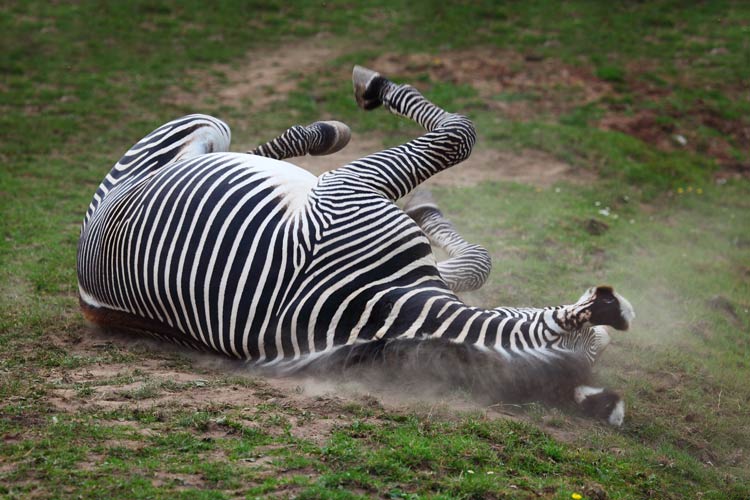
Conservation
Zebras are an important species in Africa and play a vital role in the ecosystems in which they live. However, they face a number of threats that are affecting their populations and are classified as vulnerable to extinction by the International Union for Conservation of Nature (IUCN).
One of the main threats to zebras is habitat loss. Zebras rely on specific types of habitat, such as grasslands and savannas, to survive, and these habitats are being lost or degraded due to a variety of factors, including agriculture, urbanization, and climate change.
Zebras are also vulnerable to predation by large predators, such as lions and hyenas. They are a key prey species for these predators and are important for maintaining the balance of ecosystems.
Zebras are also threatened by poaching, which is the illegal hunting of animals for their body parts or other resources. Zebras are often targeted for their skins and other body parts, which are valuable in the illegal wildlife trade.
There are a number of conservation efforts underway to help protect zebras and their habitats. These efforts include habitat protection and restoration, education and awareness campaigns, and law enforcement efforts to combat poaching and the illegal wildlife trade.
It is important to continue these efforts in order to help ensure the survival of zebras and the ecosystems in which they live.

Data / Dimensions / Size
Grevy’s zebra (Equus grevyi)
- Height at the withers: 1.25–1.6 m (4.10–5.25 ft)
- Body length: 2.5-3 m (98–118 in)
- Tail length: 38–75 cm (15–30 in)
- Body weight: 352–450 kg (776–992 lb)
- Lifespan: 20-25 years
Plains zebra (Equus quagga)
- Height at the withers: 1.1–1.45 m (43–57 in)
- Body length: 2.17–2.46 m (85–97 in)
- Tail length: 47–56 cm (19–22 in)
- Body weight: 175–385 kg (386–849 lb)
- Lifespan: 30-35 years
- Speed: up to 60 km/h
Mountain zebra (Equus zebra)
- Height at the withers: 1.15–1.45 cm (46–57 in)
- Body length: 2.1–2.6 cm (83–102 in)
- Tail length: 40–55 cm (16–22 in)
- Body weight: 204–430 kg (450–948 lb)
- Lifespan: in the wild up to 20-25 years, in captivity up to 30 years (max. 33 years)
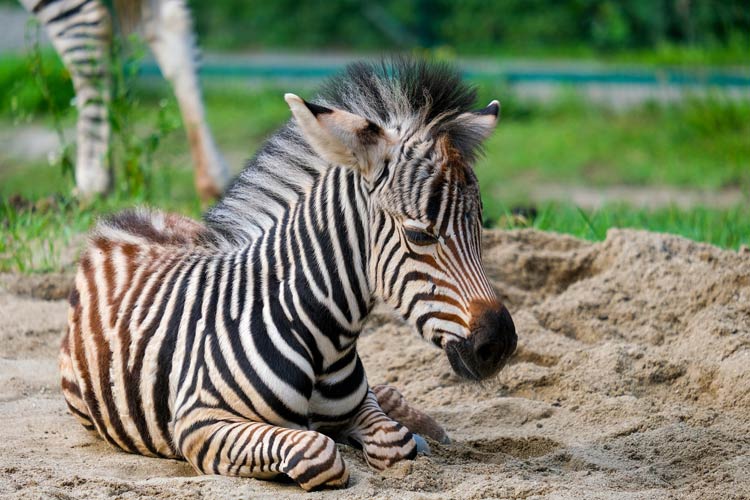
Interesting facts about zebras
- Zebras are members of the horse family (Equidae) and are closely related to horses and donkeys. They are native to Africa and are found in a variety of habitats, including grasslands, savannas, and woodlands.
- Zebras are known for their distinctive black and white striped coat, which is made up of short, stiff hairs. The stripes of each individual zebra are unique, much like fingerprints in humans.
- Zebras are herbivorous animals and feed on grasses, leaves, and other vegetation. They are well adapted to living in dry, arid environments and are able to survive on relatively small amounts of food and water.
- Zebras are social animals and are often found in herds, which can range in size from a few individuals to several hundred. Within the herd, there is a complex social hierarchy, with females and their offspring at the bottom and males at the top.
- Zebras are intelligent and social animals and are able to form strong bonds with other members of their herd. They are known to groom each other and engage in play behavior, such as chasing and kicking.
- Zebras are relatively large animals, with a typical height of about 1.5 meters (5 feet) at the shoulder and a weight of around 227 kilograms (500 pounds). They are agile and can run at speeds of up to 64 kilometers per hour (40 miles per hour).
- Zebras have a number of natural predators, including lions, hyenas, crocodiles, and leopards. They have a number of adaptations that help them to defend themselves against these predators, including their agility, speed, and ability to swim.
- Zebras are important to the ecosystems in which they live, as they help to maintain the balance of grassland vegetation by grazing on grasses and other plants. They are also a key prey species for many large predators, such as lions and hyenas, and play an important role in the food web.
- Zebras have a relatively long lifespan, with an average lifespan of around 25 years in the wild and up to 30 years in captivity. However, they face many challenges in their natural habitat, including predation, disease, and habitat loss, and many do not reach their full lifespan.
Zebras are iconic animals that are found in many different cultures around the world. They have been depicted in art, literature, and other forms of media for centuries and have inspired a range of cultural expressions and traditions.
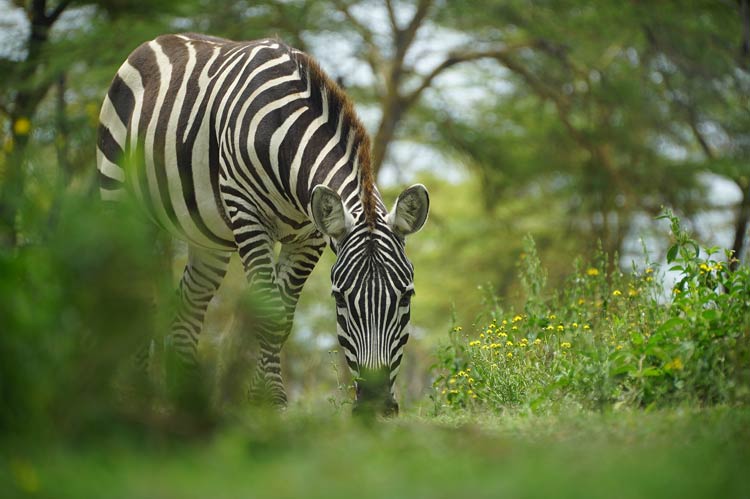
Fun facts about zebras
- Zebras are known for their distinctive black and white striped coat, which is made up of short, stiff hairs. The stripes of each individual zebra are unique, much like fingerprints in humans.
- Zebras are often depicted as playful and intelligent animals and are known to engage in a variety of play behaviors, such as chasing and kicking.
- Zebras are strong swimmers and are known to cross rivers and other bodies of water to escape predators. They are also known to use their powerful legs to kick and defend themselves against predators.
- Zebras are social animals and are often found in herds, which can range in size from a few individuals to several hundred. Within the herd, there is a complex social hierarchy, with females and their offspring at the bottom and males at the top.
- Zebras are known for their vocalizations, which include a range of sounds such as whinnies, snorts, and brays. These sounds are used for communication and to express different emotions and messages.
- Zebras are intelligent animals and are able to form strong bonds with other members of their herd. They are known to groom each other and engage in play behavior, such as chasing and kicking.
- Zebras are popular in popular culture and have been featured in a range of movies, TV shows, and other media. They are often depicted as playful, intelligent, and social animals and are beloved by many people around the world.
- Zebras are iconic animals that are found in many different cultures around the world. They have been depicted in art, literature, and other forms of media for centuries and have inspired a range of cultural expressions and traditions.
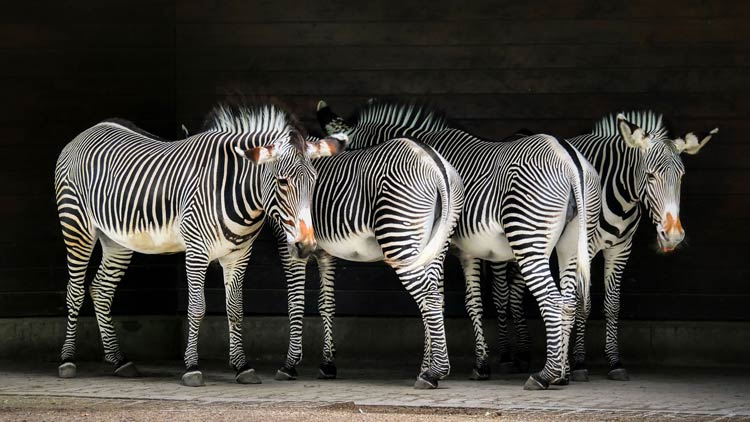
Zebra in movies
Zebras have been featured in a number of movies and TV shows over the years, often depicted as playful and intelligent animals with strong social bond. Here are a few examples of movies and TV shows that feature zebras:
- The Lion King
This classic animated movie features a character named “Zazu,” who is a red-billed hornbill and an adviser to the Lion King. In the movie, Zazu is portrayed as a wise and loyal character who is fiercely protective of the Lion King and his family. - The Wild
This animated movie features a character named “Zeke,” who is a zebra who is raised in the New York Zoo. Zeke is portrayed as a fun-loving and adventurous character who longs for a life in the wild. - Madagascar
This popular animated movie features a character named “Marty,” who is a zebra who is raised in the Central Park Zoo. Marty is portrayed as a fun-loving and adventurous character who is always looking for new experiences and challenges. - The Animals of Farthing Wood
This animated TV show features a character named “Tawny,” who is a zebra who is part of a group of animals trying to reach a nature reserve. Tawny is portrayed as a kind and loyal character who is always willing to help his friends and allies. - The Wild Thornberrys
This animated TV show features a character named “Donnie,” who is a zebra who is part of a family of wildlife documentarians. Donnie is portrayed as a fun-loving and adventurous character who is always up for a new challenge. - The Magic School Bus
This animated TV series features a character called “Zelda”, a zebra who is one of the students at the titular school. Zelda is portrayed as a smart and curious character, always eager to learn and explore new things. - The Legend of Tarzan
This live-action movie features a character named “Tarzan,” who is a human raised by apes in the jungle. Tarzan is portrayed as an intelligent and resourceful character who is able to communicate with a variety of animals, including zebras. - Dolittle
This live-action movie features a character named “Dr. Dolittle,” who is a veterinarian who is able to communicate with animals. In the movie, Dr. Dolittle is able to understand and communicate with a variety of animals, including zebras.
Zebras have also been featured in a number of other movies and TV shows over the years, often depicted as intelligent and social animals with a strong bond to their herd. They are iconic and beloved animal that has inspired a range of cultural expressions and traditions around the world.
